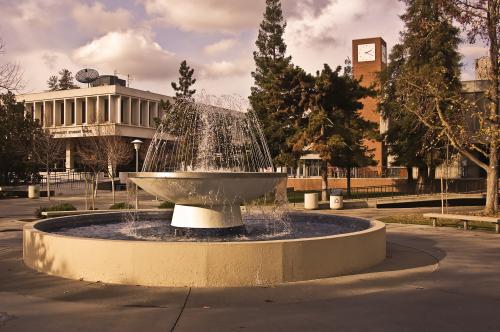Last week’s Bureau of Labor Statistics July jobs report showed a robust, 943,000-job increase from the month prior and a decrease in the unemployment rate, to 5.4%. However, the fact remains that the U.S. economy is still 6 million jobs short of where it was in February 2020—indicating there is still work to do.
Most notably, stark inequality persists between racial and ethnic groups and between places. For many people and places, the economy had never fully recovered from the Great Recession before the COVID-19 recession began. This ongoing distress has left millions of Americans facing limited prospects for finding well-paying, accessible work—damaging their quality of life.
This is why it’s important that Congress—as it considers additional investments to ensure the recovery continues—makes sure that it is deliberately and adequately investing in the distressed places that were left behind in the last recovery. Specifically, as we proposed in a new report, Congress should leverage the nation’s regional public universities as strategically located tools for reinvigorating many distressed areas. Such an initiative would be an important complement to other ongoing efforts to shore up distressed communities and counter the nation’s persistent regional divides.
Congress has already begun doing some of this work through the American Rescue Plan Act. Flexible state and local funding provisions in that legislation are providing significant support to places and people affected by the pandemic. Economic Development Agency programs such as the Build Back Better Regional Challenge promise to create a more equitable recovery. Still, Congress will need to do more to counter geographic economic divergence, which has been growing for nearly 40 years.
Importantly, no single policy response will be enough to solve the many challenges facing the nation’s distressed communities. This is in part because the challenges that distressed communities face vary. For example, a rural distressed community dealing with the employment consequences of industrial decline may have different needs than a low-income neighborhood situated in a large metropolitan area.
Given that, the federal government should continue its concerted effort to counter distress with investments on three levels:
First, Congress should continue its solid work this summer to establish a set of regional technology hubs in 10 noncoastal metropolitan areas across the U.S., with the goal of jump-starting a more robust technology and innovation economy in promising areas outside of the nation’s major technology centers. A version of this proposal has been incorporated into the U.S. Innovation and Competition Act that was recently passed by the Senate, with House action pending.
Second, Congress should consider a complementary program to ensure that every distressed region in the U.S. is getting the support it needs to fully recover in the coming years. One proposal to do so comes from Upjohn Institute economist Timothy J. Bartik, who recommended a series of federal grants aimed at distressed regional labor markets, which has the potential to support over one-third of labor markets nationwide and nearly 15% of the U.S. population. Bipartisan, bicameral legislation based on this proposal was recently introduced, indicating that momentum to do more for the country’s distressed communities is real.
However, even significant investments in restructuring the nation’s innovation geography and investing in distressed regions will still miss a significant level of local distress. For example, Chicago would likely not be considered “distressed” when viewing it on a metropolitan-area level. But when viewed on a neighborhood level (for example, by using ZIP code or census tract data), it becomes clear that large portions of the metro area are facing significant distress—including much of the city’s South Side and large portions of adjacent cities such as Chicago Heights and Gary, Ind. These more localized pockets of distress also need new investment to support an equitable recovery. One way to do so is to leverage anchor institutions situated in these communities as vehicles to promote recovery.
Which is why our third recommendation is for the nation to leverage its 400-plus regional public universities—which are situated in communities of all sizes across the country—as anchor institutions to support the well-being of distressed local communities.
Regional public universities (RPUs) are public four-year institutions that are not “Research 1” universities (schools that conduct the highest levels of research) or universities designated as land-grant institutions under the Morrill Act of 1862. RPUs have a variety of benefits for communities: Places with an RPU tend to have higher local incomes, stronger levels of local employment, and a flow of in-migration. Evidence also shows that RPUs can help communities weather economic downturns from manufacturing decline, the loss of coal mining, or even the general business cycle.

We identified at least 141 RPUs that are situated in distressed communities across 34 states and Puerto Rico. To help these universities support their local economies during the recovery, we recommend providing federal grants of between $25 million and $50 million to each school for an array of economic and community development uses. The goal of such investment is not just to support these communities directly, but also to catalyze additional investment by local partners, be that state or local government, companies, or nonprofit and philanthropic organizations.
Parallel investments should be considered too, with a focus on marginalized communities. On the federal level, the government could score policies for racial equity impact, for example. Likewise, more technical assistance should be provided to Native American tribes to access federal programs for which they are newly eligible. On the local level, cities must ensure that their investment in public space is more equitable, and consider new real estate models such as community ownership.
Each of these programs on their own are unlikely to solve the significant amount of distress that affects hundreds of places across the country—a problem that has been growing for the past 40 years. However, a surge of federal funding focused on countering distress at all levels—from the nation’s unequal overall economic geography down to local community distress—may at last be able to dislodge our stubborn spatial inequality.
With the federal government thinking seriously about how to best invest in people and places, Congress should seize this opportunity to make a generational investment in the communities most in need, with the goal of promoting a faster and more equitable recovery for all Americans.








Commentary
July’s promising jobs report hides the challenges of left-behind communities
Wednesday, August 11, 2021